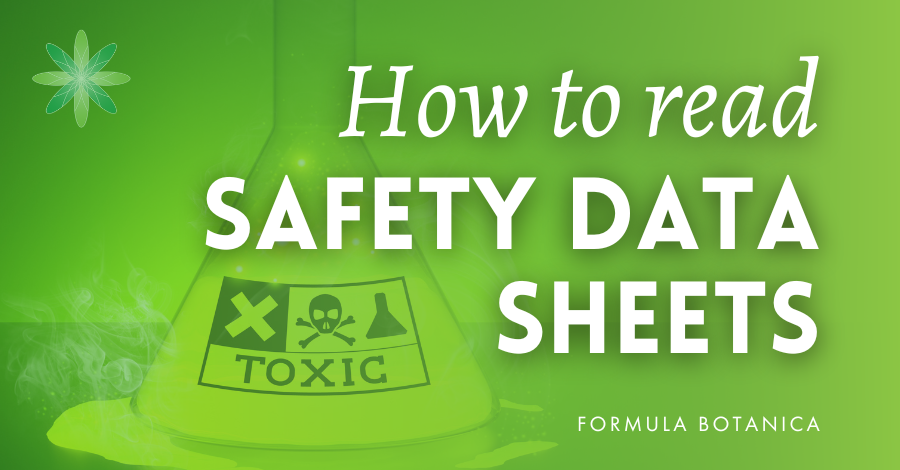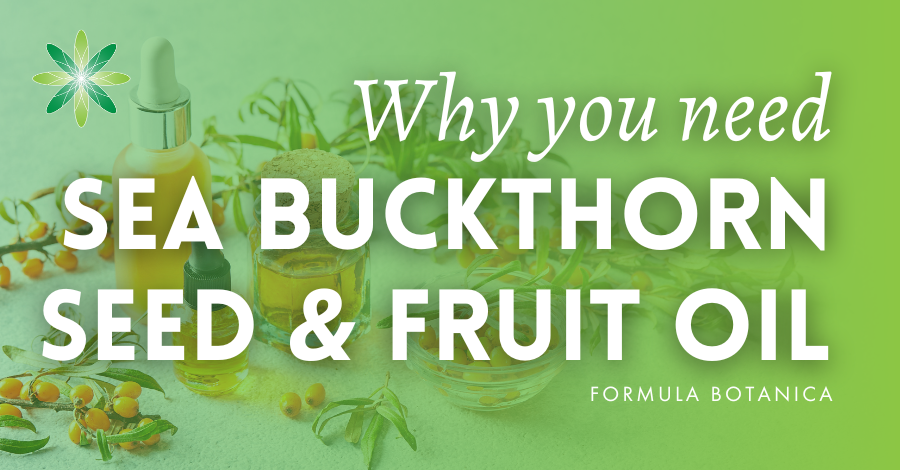Updated: 05.11.24
Ever wondered how water and oil come together in skincare? That’s thanks to functional ingredients like emulsifiers, which bind oil and water, or solubilisers, which help disperse oil-soluble compounds in water.
But what is the difference between a solubiliser and an emulsifier if they both help disperse oils in water? And how do you know which to use in your formulations?
I’ll reveal it all in today’s blog post. Stick around to learn more about these functional ingredients and how to select the right ones for your formulations. Don’t worry, it’s easier than you think!
What are solubilisers?
Solubilisers are a group of surfactants that have both water-loving (hydrophilic) and oil-loving (lipophilic) properties. As the name indicates, this allows them to solubilise oil in water or another water-based medium (like a hydrosol or glycerite).

 What are emulsifiers?
What are emulsifiers?
Emulsifiers are a group of surfactants that have more affinity with oils. Emulsifiers are used to mix oils and water, creating either oil-in-water (O/W) emulsions or water-in-oil (W/O) emulsions. O/W emulsifiers help disperse oil droplets in water, while W/O emulsifiers work the other way around, dispersing water droplets in oil. Find out more about emulsifiers below:
Emulsifiers are particularly useful for oils and other lipophilic ingredients with larger, heavier molecules than essential oils. These include plant oils, fatty esters, and waxes.
Difference between solubilisers and emulsifiers
As you might know, water and oil don’t mix. So you need something to disperse/solubilise oil-soluble compounds into water, which is where solubilisers and emulsifiers come in.
While solubilisers and oil-in-water emulsifiers (O/W) both belong to the group of surfactants and help disperse oils in water, they’re not the same and shouldn’t be used interchangeably.
Here’s a short table for you to understand the difference between solubilisers and emulsifiers:
| Solubilisers | Emulsifiers |
| Completely water soluble | Not water soluble |
| Used for small molecules such as essential oils | Used for big lipophilic molecules |
| Oil phase concentration: 0.1-2.0% | Oil phase concentration: 15-30% |
| Need low mechanical force | Need high mechanical force |
| Usually work at room temperature | May need heating/melting |
| The result is translucent to transparent | The result is milky/opaque |
| Particle size is in the nanometre to lower micrometre range | Particle size is in the micrometre range |
How do you use a solubiliser?
You can use a solubiliser to dissolve/disperse the following lipophilic (oil-loving) ingredients in water:
1. An oil-soluble preservative
You can use a solubiliser to dissolve/disperse a lipophilic (oil-soluble) preservative. I’ve conducted a small experiment to show you how to solubilise an oil-soluble preservative in water.
Here, I’ve used Kem Nat (INCI: Benzyl Alcohol (and) Glyceryl Caprylate (and) Glyceryl Undecylenate) as our preservative. In all our examples, I’m using Sepiclear G7 (INCI: Heptyl Glucoside) as our solubiliser. Sepiclear G7 is a natural, COSMOS-certified solubiliser that doesn’t create foam.
I’ve used it in the following preservative-to-solubiliser ratios (from left to right): 1:1; 1:2; 1:3.

Although it is not entirely clear, it is homogenous and doesn’t separate. Therefore, 1:3 is the optimal ratio for this preservative.
2. Essential oil or a fragrance oil
You can also use a solubiliser to disperse an essential oil or a fragrance oil, such as peppermint oil, used in the example below.
I’ve used the following ratios of essential oil to solubiliser (from left to right): 1:2; 1:5; 1:10.
Here, you can see that at 1:2 the peppermint essential oil didn’t fully solubilise and the solution presents a milky aspect with some oil floating on top. At 1:5 the solution is more homogenous but still opaque, with a few essential oil droplets floating. At 1:10, the essential oil solubilises completely and the solution is clear.
Therefore, 1:10 is the optimal ratio for this solubiliser and essential oil.
3. An oil-soluble vitamin
You can also use a solubiliser to disperse an oil-soluble vitamin in water, such as vitamin E. In this example, I’ve used vitamin E diluted at 70% in sunflower oil.
Since vitamin E is heavier than essential oils, I don’t expect the solubiliser to form a completely clear solution. For this experiment, I’ve used the following ratios (from left to right): 1:2; 1:5; 1:15.
Here, you can see that the vitamin E solubilises at 1:15, but the solution still isn’t transparent. At 1:2 you can see some oil floating and at 1:5 some of the oil settles to the bottom.
4. CO2 extracts
You can also use a solubiliser to disperse CO2 extracts, like sage CO2 extract, used in the example below.
Please note that the composition of CO2 extracts can vary depending on the plant used and that not all CO2 extracts can be properly solubilised.
For this experiment, I’ve used sage CO2 extract at 1:5 and 1:10.
At 1:5 you can see the oil and resins floating. Same as with vitamin E, the solution is opaque, but at 1:10 it is homogenous and doesn’t separate. As the CO2 extract contains heavier compounds, it is difficult to achieve clear solutions, even using a solubiliser.
What happens if you don’t use a solubiliser?
The experiments above are all very nice and well, but what would happen if you didn’t use a solubiliser? And why is it so important to use the right ratio?
First of all, if you don’t use a solubiliser, you’ll have a layer of oil floating on top of your water-based formulation.
Not only does it not only look nice, but it may also result in functional and safety issues. I’ve summarised it all in the table below:
| Ingredient | Risks of over-dosing when not solubilised | Risks of under-dosing when not solubilised |
| Lipophilic preservatives | You’re increasing the risks of an allergenic reaction or skin sensitisation if your preservative contains skin-sensitising agents. Additionally, if the preservative isn’t solubilised, it can’t perform its action effectively, which could lead to microbial growth and safety issues. | Your product may be inadequately preserved and this will lead to safety and stability issues. |
| Essential oil | You’re increasing the risks of an allergenic reaction or skin sensitisation. | Your customer will not benefit from the functional properties of the essential oils you’ve chosen for your product. |
| CO2 Extract | You’re increasing the risks of an allergenic reaction or skin sensitisation if your CO2 extract contains high percentages of essential oil sensitisers. | Your customer will not benefit from the functional properties of the CO2 extracts you’ve chosen for your product. |
| Lipophilic vitamins | This depends on the vitamin. While overdosing vitamin E isn’t as serious, overdosing vitamin A is. It’s better to be safe than sorry. | Your customer will not benefit from the functional properties of the lipophilic vitamins you’ve chosen for your product. |
Importance of a solubiliser
As you can see, you need to use a solubiliser, and in the right ratio as well. In case of an overdose, you’re increasing the risks of an allergenic reaction or sensitisation. In case of an under-dose, you might not benefit from the functional properties of the ingredients you’ve chosen for your product.*
*Don’t be alarmed by reading the word “hazards.” Most essential oils have allergenic components (benzyl alcohol, linalool, limonene, etc) and hence have maximum dermal limits for their usage in skin and hair care formulations.
Adhering to these dermal limits during formulation is not only a safe practice, it is mandatory in many parts of the world. Applying a solubiliser to keep the concentration of the essential oil uniform in the whole solution helps guarantee that the ingredients in your products will be used safely within the dermal limits at each application.
Solubiliser vs. emulsifier comparison
I’ve conducted another experiment for you, so you can see the difference between a solubiliser and an emulsifier in action.
Although both groups of solubilisers and emulsifiers are considered surfactants and basically do the same thing, they are different in their functions and the formulations they create. You cannot replace a solubiliser with an emulsifier, or vice versa.
In this example, I’ve used Sepiclear G7 as our solubiliser and Sucragel AOF (INCI: Glycerin (and) Prunus Amygdalus Dulcis Oil (and) Sucrose Laurate (and) Aqua) as the emulsifier, at a 1% ratio.
As you can see, whereas the solubiliser (left) is completely soluble in water, the emulsifier (right) is not soluble. It first disperses to a milky solution but separates into two phases within a few hours.*
*I didn’t take a photo of the separation, but it does separate after some time.
Where to find natural solubilisers
If you’re wondering where you can buy natural solubilisers, you’re in the right place. Formula Botanica works with several ingredient suppliers around the world, which we list in our exclusive supplier guide, which you can find in our courses.
I recommend you start with Symbiosolv Clear Plus MB (INCI: Caprylyl/Capryl Glucoside (and) Aqua (and) Sodium Cocoyl Glutamate (and) Glyceryl Caprylate (and) Citric Acid (and) Polyglyceryl-6 Oleate (and) Sodium Surfactin), as it’s the easiest to source and work with.
You can then do your own research and experiment with different solubilisers. You might find this resource useful:
While natural solubilisers tend to be harder to find, there are still some available and the number of ingredients available is growing every day.
FAQ
What are solubilisers?
Solubilisers are generally a group of surfactants that disperse lipophilic (oil-loving) ingredients in water. You can use them to disperse oil-soluble preservatives, essential oils or fragrance oils, oil-soluble vitamins and CO2 extracts.
What are emulsifiers?
Emulsifiers are a group of surfactants used to blend oils in water. They are typically used in emulsions.
What’s the difference between solubilisers and emulsifiers?
While both groups of solubilisers and emulsifiers are surfactants and perform similarly, they are very different. You can’t replace a solubiliser with an emulsifier, or vice versa.
Among many other differences, solubilisers are more soluble in water and form micelles with a smaller particle size, meaning they can make a clear or translucent solution.
Emulsifiers are generally more soluble in oil and form opaque mixtures. Solubilisers are also used to incorporate small amounts of light lipophilic ingredients (~0.1-2%) while emulsifiers generally support an oil phase between 15-30% and up to 50% in some cases.
What happens if you don’t use a solubiliser?
If you don’t use a solubiliser, you’ll have oil floating on top of water. You may also encounter additional functional and safety issues.
Suggested suppliers
Alexmo Cosmetics (EU): Sepiclear GT
Ellemental (EU): Symbiosolv Clear Plus MB
Soapmakers (UK): Symbiosolv Clear Plus MB
Essential Labs (USA): RESASSOL® VPF
Learn more about functional ingredients
I hope you enjoyed this post!
If you’d like to learn more about functional ingredients such as solubilisers and emulsifiers, check out our Advanced Diploma in Organic Cosmetic Science where we break down the role of these functional ingredients.
If you’re new to formulating, you can check out our free training course instead, linked below, where we teach you how to make your own natural and organic skincare from home. I know you’ll love it!
Leave us a comment

Dr. Elham Eghbali was Formula Botanica’s Cosmetic Chemist between 2014 and 2018. She has over 20 years’ industry experience and is based in Bavaria, Germany. To read more about Formula Botanica’s team, visit our staff page.



 What are emulsifiers?
What are emulsifiers?


































